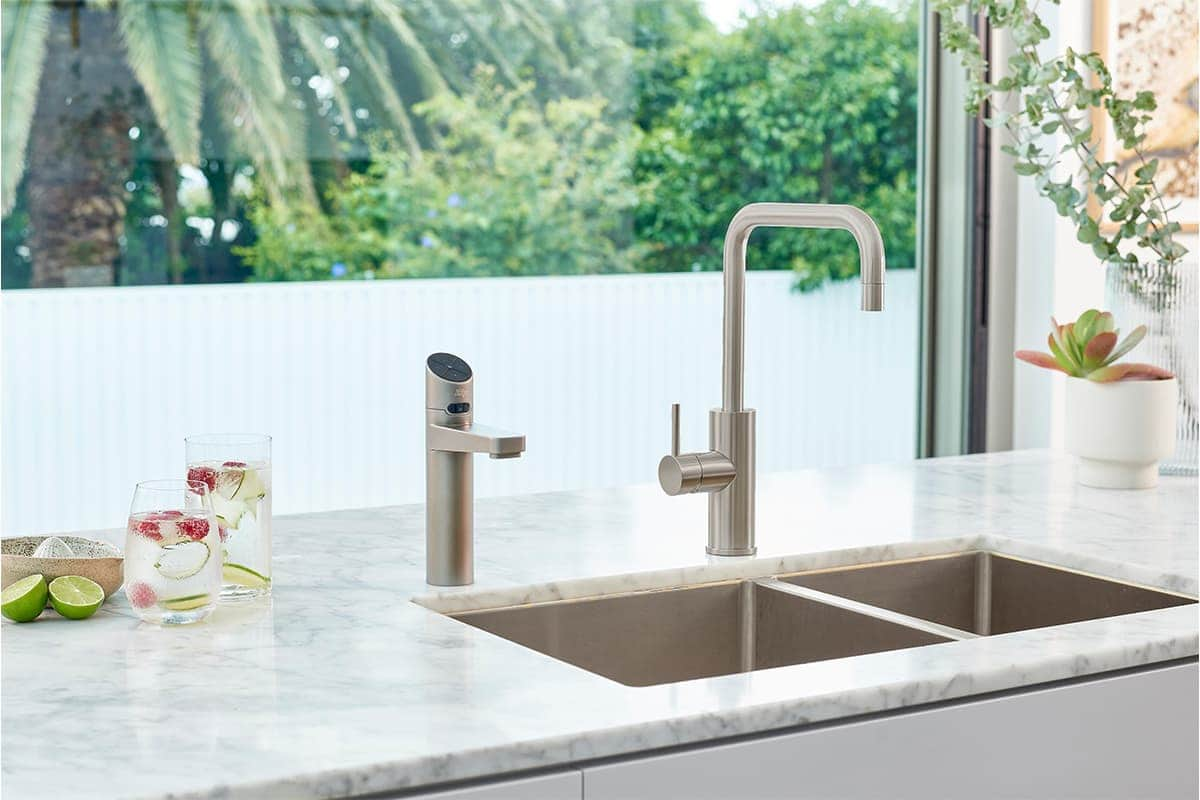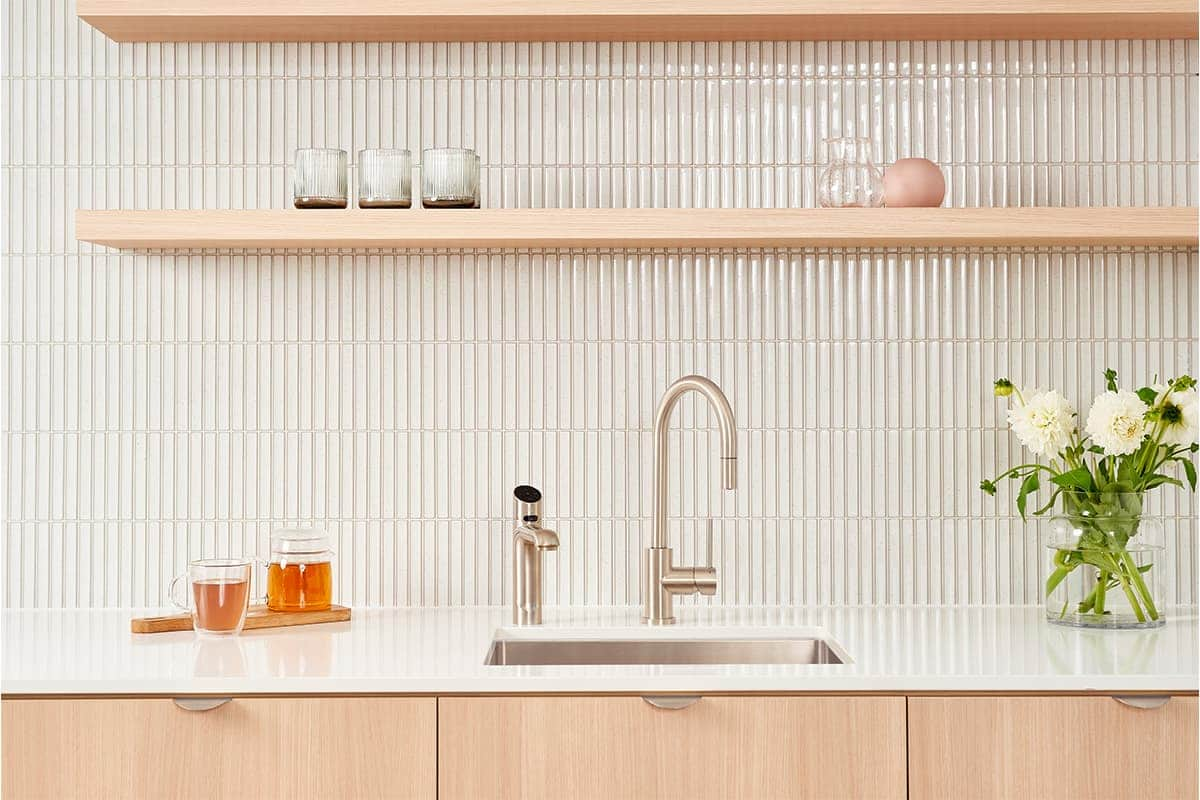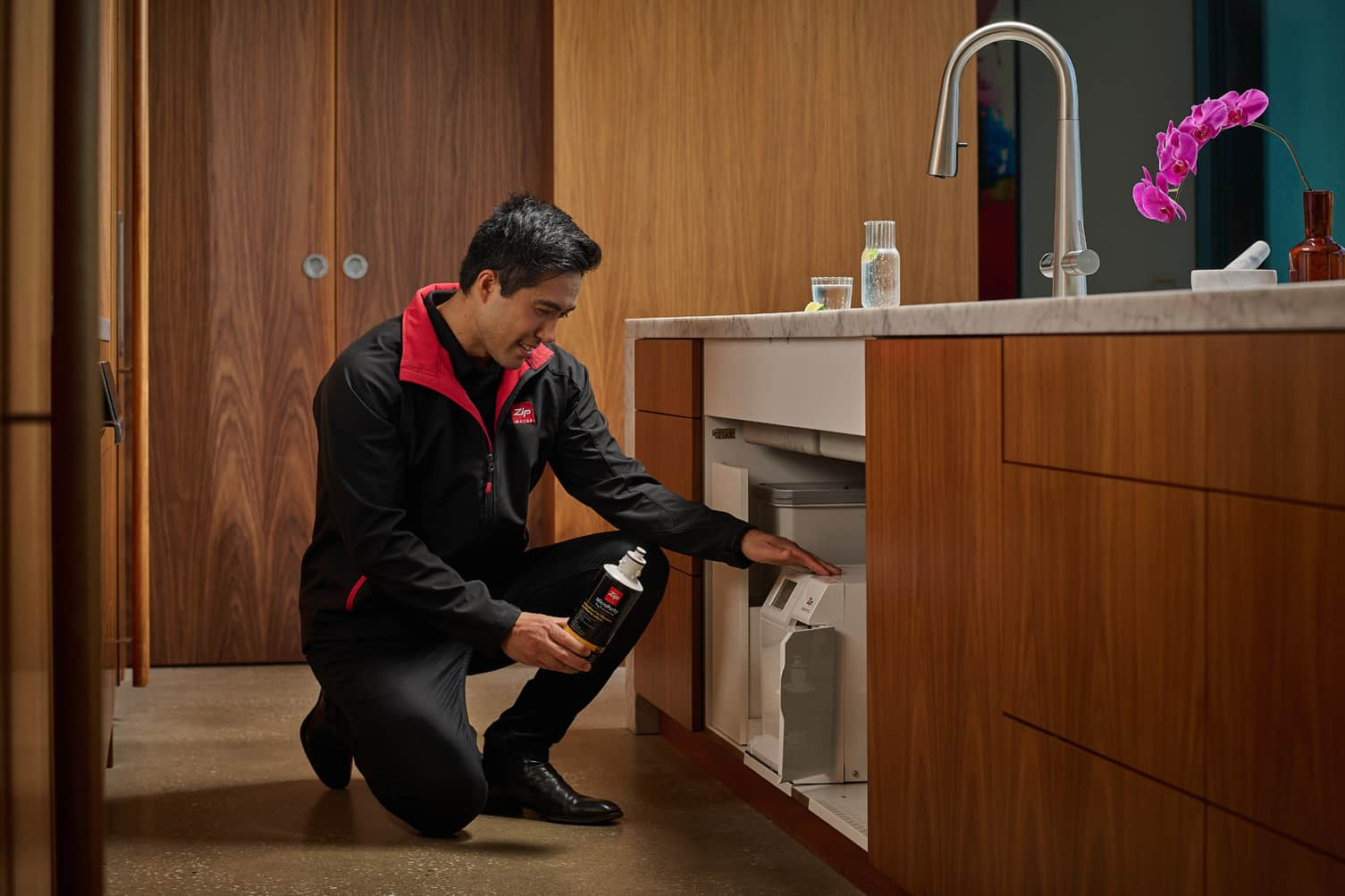Still Water Vs Carbonated Water: What’s the Difference?
Health | 01-10-25

Sparkling water is simply still water that’s been carbonated to give it fizz (either naturally from springs or added). That means discussion of still water vs sparkling water isn’t always clear-cut.
Why? Because both hydrate your body equally. Still water is clean and neutral, while sparkling or carbonated water is crisp and bubbly. Neither is better or worse for you overall.
What really matters is consistency. The best choice is the one you’ll drink more of. And for many Australians, that means enjoying both.
In this article, we’ll help you answer the question: still water vs carbonated water – which is better for you?
We'll cover:
- Still vs carbonated: what’s the difference?
- Hydration and health
- Taste
- Digestion
- Teeth and acidity
- Minerals and sodium
- The Australian context
- Still water vs sparkling water: comparison at a glance
- When to choose each option
- Why filtration matters
- How to enjoy both at home
What’s the real difference between still water and sparkling?
At its simplest, still water is just that – plain, non-carbonated water. Sparkling water is still water that’s been carbonated, either naturally at a mineral spring or by adding carbon dioxide. It’s what gives you that crisp, effervescent mouthfeel.
But here’s where it can get confusing. Sparkling, soda, seltzer, mineral water – people use the terms interchangeably, yet they’re not the same:
- Sparkling water – carbonated, sometimes with naturally occurring minerals, or purified water with added fizz.
- Mineral water – comes from underground sources, contains natural minerals like calcium or magnesium, often naturally sparkling.
- Soda water (club soda) – artificially carbonated with added salts such as sodium bicarbonate or potassium sulfate, which give it a sharper, salty edge.
- Seltzer – a US term for plain carbonated water, typically without added minerals.
So when you’re weighing up still water vs sparkling water, know that both hydrate equally, but your experience differs: one is neutral and smooth, the other lively and refreshing. Just don’t mix them up with soda water.
Hydration and health: which hydrates better?
From a hydration perspective, there’s no contest. Still and sparkling water are equally effective. Medical experts at Healthline confirm that drinking water, carbonated or not, supports hydration in the same way.
The real difference comes down to preference. If bubbles make you sip more often, sparkling is a win. If you prefer smooth and neutral, stick with still. Just note that soda water and some flavoured sparkling waters can contain added sodium or acids, which aren’t ideal for all-day drinking.
In short: choose the one you’ll drink more of, and you’ll stay well hydrated.
Taste, enjoyment and how much you’ll drink
When it comes to water, taste isn’t about flavour so much as feel. Still water is easy to sip without thinking. Sparkling water is crisp and lively, with bubbles that make every glass feel a little more special.
That difference matters. Enjoyment drives habit. If you find plain water boring, sparkling can keep things interesting and even help you cut back on soft drinks. If you like a more subtle experience, still water is the steady choice you’ll turn to all day.
In practice, most Australians benefit from having both. Still water keeps you consistently hydrated, while sparkling adds variety and makes social occasions feel more considered. The more you enjoy your water, the more of it you’ll drink. And that’s the real goal.
Digestion and sensitivity
For most people, sparkling water is easy to enjoy. The bubbles can even help digestion – sparkling water could help you feel lighter after a rich meal. Research in the European Journal of Gastroenterology & Hepatology found that carbonated water may ease mild digestive discomfort and support regularity. And the experts at WebMD agree. Sparkling water can be a small, fizzy assist for your gut.
But carbonation isn’t perfect for everyone. If you live with reflux, irritable bowel syndrome or simply have a sensitive stomach, the fizz can sometimes cause bloating or discomfort. Still water is the gentler option in those cases.
The takeaway? Listen to your body. Sparkling can be refreshing and supportive for some, while still water is the safe baseline for everyone. Having both on hand lets you choose what feels best in the moment.
Teeth and acidity
This question comes up a lot in dental clinics, and the answer is reassuring. According to the Australian Dental Association, plain sparkling water is a much better choice than sugary drinks and soft drinks. It’s mildly acidic, but without sugar or additives, the risk to your teeth is low.
Not all acidic drinks are equally harmful. The key is understanding where sparkling water sits on the scale – and how to enjoy it without putting your enamel at risk.
Because carbon dioxide forms a weak carbonic acid, sparkling water usually sits at a pH of around 4. That makes it mildly acidic, but far less so than orange juice (pH ~3.3) or cola (pH ~2.5). Compared to sugary drinks, sparkling water is a much gentler choice for your teeth.
Colgate’s dental experts agree: the key isn’t just what you drink, but how you drink it.
Sipping sparkling water slowly throughout the day gives your enamel less time to recover. But drinking it with meals, rinsing with still water afterwards, and waiting at least 30 minutes before brushing? That’s a different story.
So, no, plain sparkling water is not bad for your teeth. It’s generally considered safe – especially when consumed mindfully.
Learn more: Is sparkling water bad for your teeth? Or go deeper with our guide to sparkling water and acidity.
Minerals, sodium and labels
Not all sparkling waters are the same, and that’s where labels matter.
- Mineral water comes from underground sources and naturally contains minerals like calcium or magnesium. It may be still or naturally sparkling. These minerals can add a subtle taste and a small nutritional boost, though most Australians already get enough through food.
- Soda water (club soda) is artificially carbonated and often has added sodium salts to sharpen the flavour. It’s fine occasionally, but if you’re drinking it all day, that extra sodium may not be ideal.
- Flavoured sparkling waters often include citric acid or preservatives that lower pH further, making them more acidic than plain varieties.
So, if you enjoy sparkling, choose plain or lightly flavoured, check sodium levels on the label, and know that filtration gives you the best foundation.
The Australian context
Australia’s drinking water is among the safest in the world, regulated by the Australian Drinking Water Guidelines. But “safe” on paper doesn’t always mean perfect in the glass.
The taste and feel of water can change depending on where you live. In Sydney or Brisbane, chlorine can leave a noticeable odour. In Adelaide, reliance on the River Murray sometimes means harder, mineral-heavy water. Smaller towns sometimes face cloudiness or ageing pipes. And in regions near military bases or fire training grounds, PFAS contamination has been detected in groundwater.
What does that mean for still vs sparkling water? Simply that both are only as good as the base water they come from. Whether you enjoy a neutral still or a crisp sparkling, starting with filtered water is the best way to enjoy more of it.
Still water vs sparkling water (at-a-glance comparison)
When you put still and sparkling side by side, the differences are less about health and more about how you enjoy them. Here’s a quick look:
|
Still water |
Sparkling water |
|
|
Hydration |
Hydrates effectively |
Hydrates just as well |
|
Taste |
Smooth, neutral |
Crisp, lively, feels like a treat |
|
Dental impact |
Neutral, enamel-friendly |
Mildly acidic; safe in moderation |
|
Digestion/comfort |
Gentle on sensitive stomachs |
May aid digestion, but can cause bloating for some |
|
Minerals & additives |
None unless naturally occurring |
Plain: just water and fizz; mineral waters add calcium/magnesium; soda waters may add sodium |
|
Sustainability |
Best when filtered at home |
Best when made from filtered water on tap; avoids bottled waste |
|
Lifestyle fit |
Everyday hydration baseline |
Great with meals, social occasions, or as a soft drink swap |
When to choose still vs sparkling
There’s no hard rule here — the better choice depends on the moment. Here are a few everyday situations where one may suit you more than the other:
- Workday hydration: Still water is the steady option you can sip all day. Sparkling makes a refreshing mid-afternoon change.
- Sensitive enamel or reflux: Still is the gentler pick. If you love bubbles, enjoy sparkling with meals, then rinse with water.
- After exercise: Chilled still water is best for quick rehydration. Sparkling can be a satisfying follow-up once you’ve cooled down.
- Entertaining at home: Sparkling shines here – crisp, celebratory, and a healthier swap for sugary soft drinks.
- Cutting back on alcohol or soft drink: Sparkling offers the fizz and flavour hit without the sugar or hangover.
Why filtration matters for both
Whether you prefer still or sparkling, the quality of your base water makes all the difference.
Filtration removes the things carbonation can’t touch – like chlorine taste, sediments, and contaminants such as microplastics, asbestos fibres, heavy metals and PFAS. That means your still water tastes smoother, and your sparkling water feels cleaner and crisper.
It also ensures consistency. Tap water in Australia meets strict safety standards, but the experience can vary depending on where you live. Filtration bridges that gap, giving you the same fresh, pure foundation every time.
So while the choice between still and sparkling comes down to taste and occasion, filtration is the smart upgrade that makes both better.
How to enjoy both at home (the Zip way)
Why choose between still and sparkling when you can have both on tap?
With a Zip HydroTap, you get filtered still, sparkling, and even boiling water instantly. The MicroPurity filtration system removes chlorine, lead, asbestos fibres, microplastics and up to 99.4% of total PFAS* so your water tastes better and feels fresher (no matter the style).
It’s also about ease. Chilled still water after a run? Done. Making a cuppa? Use boiling water from your tap. Hosting friends and fancy bubbles? Sparkling pours straight from the tap, perfectly carbonated every time. All without kettles, bottles or clutter on your bench. Water becomes simpler, more sustainable, and a little more special – every time you turn on the tap.
Discover our sparkling water taps and chilled water taps, or find some help deciding with our HydroTap selector tool.
And if you still have questions, learn more about whether sparkling water is good for you or how to filter tap water.
* Zip MicroPurity filters sizes 1 and 1.5 (93701 and 93702) are certified to NSF/ANSI Standard 53 to reduce 99.4% of Total PFAS (average reduction).























